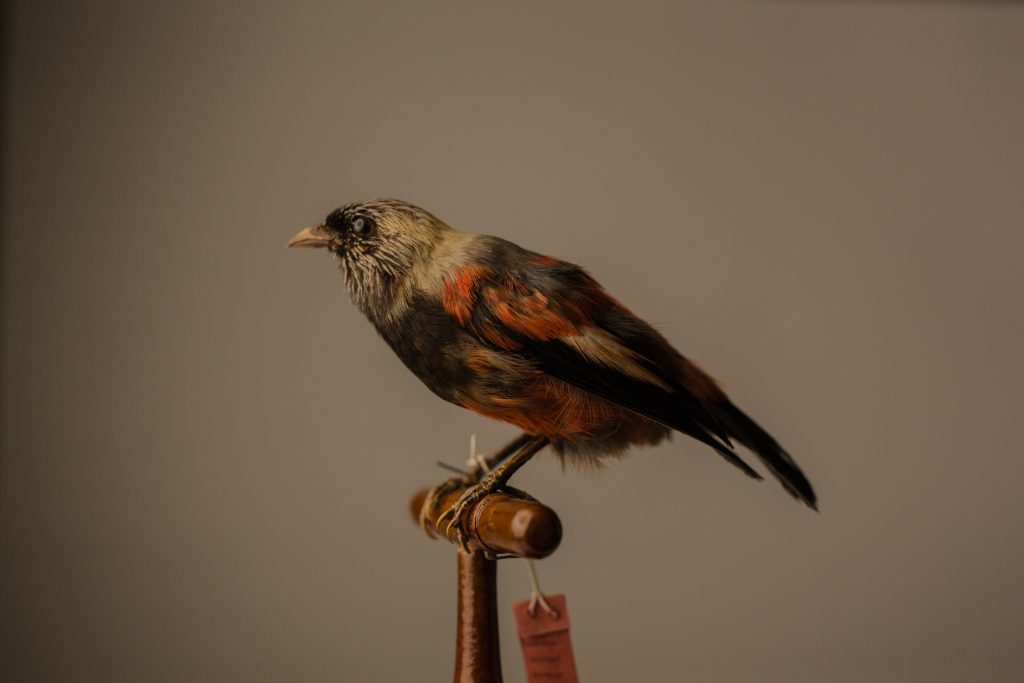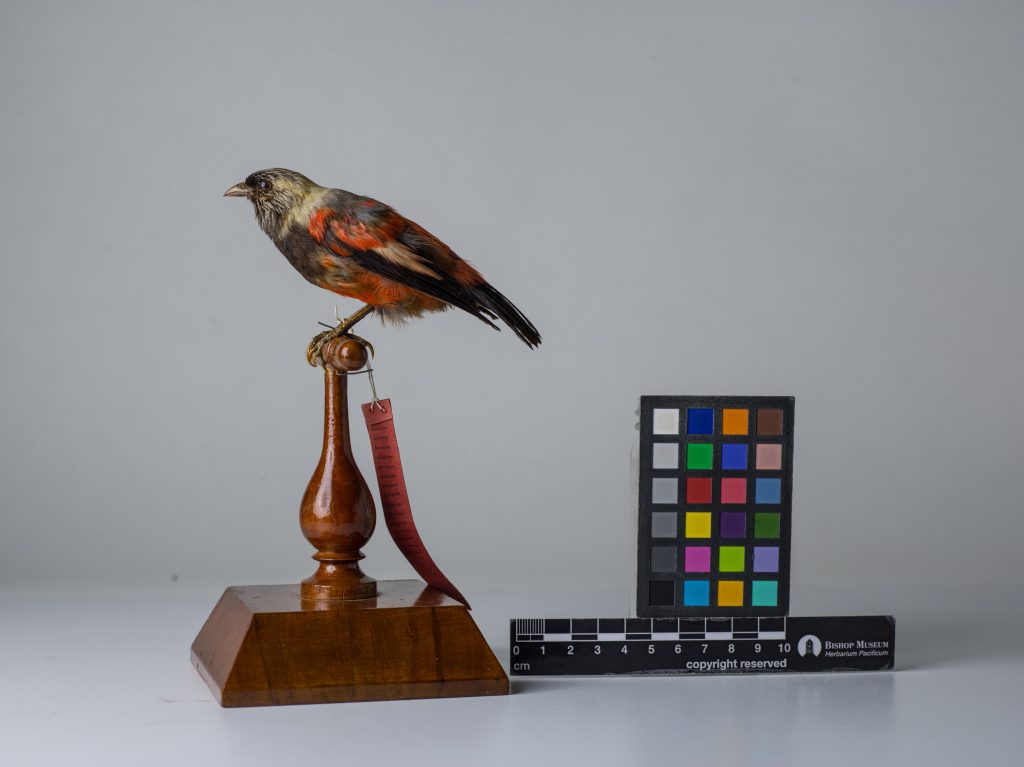ʻUla-ʻai-hāwane

Names
- Common Name: ʻUla-ʻai-hāwane
- Scientific: Ciridops anna
Song
No available recording.
Conservation Status
Extinct. Last confirmed sighting in the wild in 1892.
Species Information
‘Ula-‘ai’-hāwane was a Hawaiian honeycreeper native to Hawai’i island. The ‘ula-‘ai-hāwane name was established by Polynesians, meaning “red bird eating hawani [loulu] palms” (Pyle & Pyle 2017). The adult male plumage is recognized by their dark brown, black and scarlet feathers. The female is noted to have been similar in plumage but with their colors duller than the males. Their reported food of choice consisted of small insects. ‘Ula-‘ai’-hāwane was last observed in 1892.
Distribution
Hawai’i Island.
Habitat
ʻUla-ʻai-hāwane inhabited high elevation forests across Hawai’i Island, as these forests had an abundance of loulu palms for gleaning (Pyle & Pyle 2017). The insects in these forests and the fibers of the palm trees were the honeycreepers primary food source.
Threats
The early extinction of these species could be a result of elimination of loulu palm stands on Hawaiʻi Island.
Photos
Additional Resources
The text above has been provided by Bishop Museum’s RLP Monographs and Maui student, Eliot Carter.
Pyle, R.L., and P. Pyle. 2017. The Birds of the Hawaiian Islands: Occurrence, History, Distribution, and Status. B.P. Bishop Museum, Honolulu, HI, U.S.A. Version 2 (1 January 2017) http://hbs.bishopmuseum.org/birds/rlp-monograph.
Eliot Carter is a 10th grader on Maui. Eliot has great interest in Hawaiian birds. Volunteering at Bishop Museum for five years has contributed to this interest. Eliot’s passion and efforts have supported the findings related to Hawai’i’s extinct forest birds.




